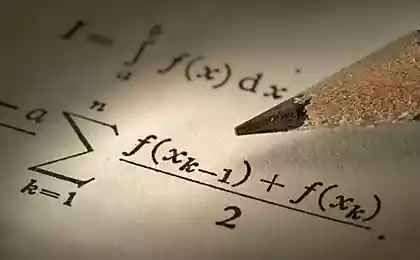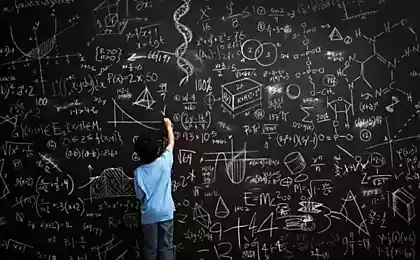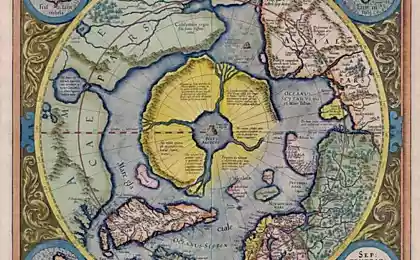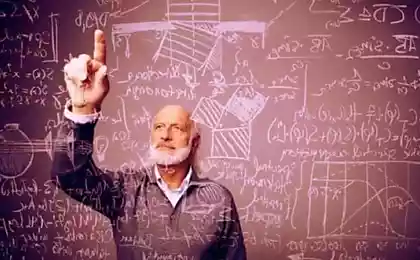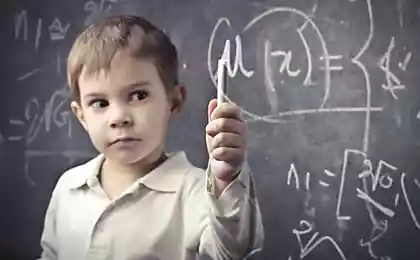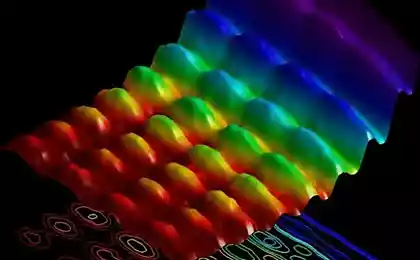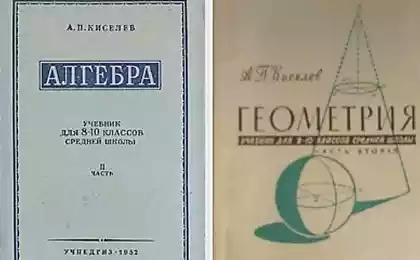493
We can't solve for 120 years
Many do not know for example that the famous and Fermat's last theorem has already been proved, but there is generally not yet proven mathematical problems.
In August 1900 in Paris held the second international Congress of mathematicians. He could pass unnoticed if it were not a German scientist, Professor David Hilbert, who in his report put 23 the most important at the time, significant problems relating to mathematics, geometry, algebra, topology, number theory, probability theory, etc.
At the moment, solved 16 problems 23. 2 are not valid mathematical problems (one was too vague to understand, solved or not, the other far from the solution, is physical, not mathematical). Of the five remaining two problems not solved in any way, and the three solved only for some cases.
Here's the entire list
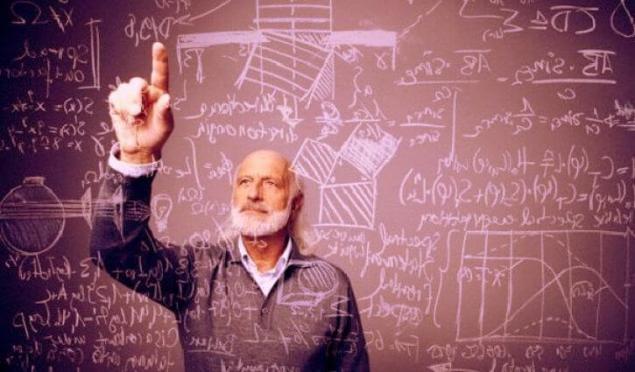
Here are today Hilbert's problems and their status:
1. The continuum hypothesis. Is there an infinite cardinal number strictly between the cardinals of the sets of integers and real numbers? Resolved by Paul Cohen in 1963 — the answer to the question depends on the axioms used in set theory.
2. Logical consistency of arithmetic. To prove that the standard axioms of arithmetic can't lead to a contradiction. Solved by Kurt gödel in 1931: with the usual axioms of set theory, such a proof is impossible.
3. Runasaccountname isometric tetrahedra. If two tetrahedrons have the same volume, is it always possible to cut one of them into a finite number of polygons, and gather them from the second? Solved in 1901 by max Dehn, the answer is no.
4. Straight as the shortest distance between two points. To formulate the axioms of geometry based on the definitions of direct and see what this implies. Too vague a goal to be able to count on a certain decision, but it is made much.
5. Lie group without relying on differentiability. Technical question of the theory of transformation groups. In one interpretation it was decided Andrew Gleason in the 1950s, and in the other, Hidehiko Yamabe.
6. The axioms of physics. To develop a rigorous system of axioms for mathematical physics, like mathematics or mechanics. A system of axioms for probabilities was built by Andrei Kolmogorov in 1933
7. Irrational and transcendental numbers. To prove that certain numbers are irrational or transcendental. Solved in 1934 by Aleksandr Gelfond and Theodor Schneider.
8. The Riemann Hypothesis. To prove that all nontrivial zeros of the Riemann Zeta function lie on the critical line.
9. The laws of reciprocity in number fields. To generalize the classical law of quadratic reciprocity (the squares on a particular module) to a higher degree. Partially solved.
10. The conditions of existence of solutions to Diophantine equations. Find an algorithm that can determine whether a given polynomial equation with many variables solutions in integers. The impossibility was proved by Yuri Matiyasevich in 1970
11. Quadratic forms with algebraic numbers as coefficients. Technical issues related to the solution of Diophantine equations with many variables. Solved partially.
12. Kronecker's theorem on Abelian fields. Technical issues related to the generalization of a theorem of Kronecker. Not proven so far.
13. The solution of equations of the seventh degree by functions of a special kind. To prove that the General equation of the seventh degree cannot be solved using functions of two variables. In one of the interpretations of the possibility of such solutions was proved by Andrei Kolmogorov and Vladimir Arnold.
14. The finiteness of complete systems of functions. To extend the theorem of Hilbert on algebraic invariants of all transformation groups. Denied Masayoshi Nagata in 1959.
15. Isilimela geometry of Schubert. Herman Schubert found lax method of calculating various geometric configurations. The challenge is to make this method rigorous. A complete solution is still there.
16. Topology of curves and surfaces. How many connected component may be an algebraic curve of given degree? How many different periodic cycles can have an algebraic differential equation of a given degree? A limited promotion.
17. The presentation of certain forms in the form of a sum of squares. If a rational function always takes nonnegative values, then should it necessarily be expressed as a sum of squares? Decided Emil Artin, D. Dubois and Albrecht Pfister. True for real numbers, it is wrong in some other numeric systems.
18. Space-filling polyhedra. Common questions about filling out the space of congruent polyhedra. Is related to the Kepler conjecture, now proven.
19. Analyticity of solutions in variational calculus. Variational calculus answers questions such as "find the shortest curve with given properties". If a similar problem is formulated by means of beautiful functions, should a decision also to be beautiful? Proved Ennio de Giorgi in 1957 and John Nash.
20. A boundary value problem. To understand the solutions of differential equations of physics in a certain region of space, if you set the properties of the solutions of the bounding surface area. Mostly solved (the contribution made by many mathematicians).
21. The existence of differential equations with a given monodromy. A special type of complex differential equations, which can deal with data points of the singularities and the monodromy group. To prove that there can be any combination of these data. The answer is "Yes" or "no" depending on interpretation.
22. Standardization with the use of automorphic functions. Technical simplification of the equations. Decided Paul Koebe shortly after 1900
23. The development of the calculus of variations. Hilbert called for new ideas in the field of calculus of variations. Much has been done, but the wording is too vague, so the problem can be considered solved.
Once again convinced that these words are not of "my world". So who else has a chance to become famous ...
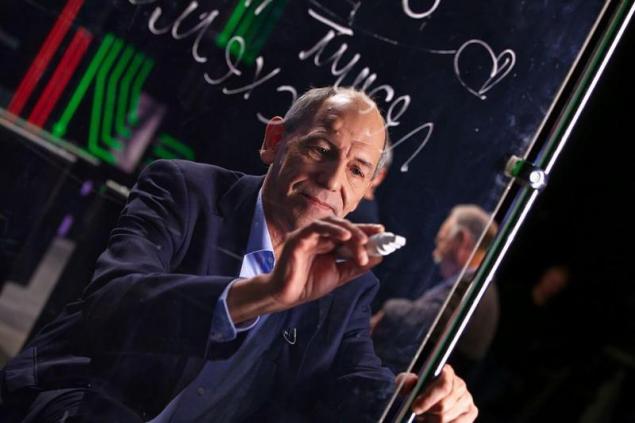
By the WAY
What else will give a million dollars...
In 1998, funds of billionaire Landon Glue (Landon T. Clay) in Cambridge (USA) was founded the Mathematical Institute in his name (Clay Mathematics Institute) for the promotion of mathematics. 24 may 2000 the experts of the Institute chose seven of the most, in their opinion, puzzling problems. And designated one million dollars for each.
The list is called the Millennium Prize Problems.
1. Problem Cook
You need to determine: whether the verification of the correctness of the decision of a task to be longer than the solutions. This logical task is important for professionals in cryptography — data encryption.
2. The Riemann Hypothesis
There are so-called Prime numbers, e.g. 2, 3, 5, 7, etc. that are divisible only by themselves. How many is not known. Riemann thought that it was possible to determine the regularity of their distribution. Who will find will also provide a service of cryptography.
3. The conjecture of birch and Swinnerton-Dyer
The problem is connected with solving equations with three unknowns, erected in degree. Need to figure out how to solve them, regardless of the complexity.
4. The Hodge Conjecture
In the twentieth century mathematicians have discovered a technique study of the shape of complex objects. The idea is to use instead of the object itself, a simple "building blocks" that are glued together to form his likeness. We need to prove that is valid always.
5. The Navier – Stokes Equations
About them worth remembering in the plane. The equations describe the air currents that keep it in the air. Now solve the equations approximately, by approximate formulas. Need to find accurate and prove that in three-dimensional space there exists a solution of the equations which are always true.
6. The Equations Of Yang – Mills
In the world of physics there is a hypothesis: if an elementary particle has a mass, then there is its lower limit. But what — is not clear. Need to get to him. This is perhaps the most complicated problem. For its solution it is necessary to create a "theory of everything" equation, uniting all forces and interactions in nature. One who is able to probably get a Nobel prize.published
Also interesting: 10 most weird biological discoveries of 2016
The great women scientists and their discovery
Source: masterok.livejournal.com/3313959.html
In August 1900 in Paris held the second international Congress of mathematicians. He could pass unnoticed if it were not a German scientist, Professor David Hilbert, who in his report put 23 the most important at the time, significant problems relating to mathematics, geometry, algebra, topology, number theory, probability theory, etc.
At the moment, solved 16 problems 23. 2 are not valid mathematical problems (one was too vague to understand, solved or not, the other far from the solution, is physical, not mathematical). Of the five remaining two problems not solved in any way, and the three solved only for some cases.
Here's the entire list

Here are today Hilbert's problems and their status:
1. The continuum hypothesis. Is there an infinite cardinal number strictly between the cardinals of the sets of integers and real numbers? Resolved by Paul Cohen in 1963 — the answer to the question depends on the axioms used in set theory.
2. Logical consistency of arithmetic. To prove that the standard axioms of arithmetic can't lead to a contradiction. Solved by Kurt gödel in 1931: with the usual axioms of set theory, such a proof is impossible.
3. Runasaccountname isometric tetrahedra. If two tetrahedrons have the same volume, is it always possible to cut one of them into a finite number of polygons, and gather them from the second? Solved in 1901 by max Dehn, the answer is no.
4. Straight as the shortest distance between two points. To formulate the axioms of geometry based on the definitions of direct and see what this implies. Too vague a goal to be able to count on a certain decision, but it is made much.
5. Lie group without relying on differentiability. Technical question of the theory of transformation groups. In one interpretation it was decided Andrew Gleason in the 1950s, and in the other, Hidehiko Yamabe.
6. The axioms of physics. To develop a rigorous system of axioms for mathematical physics, like mathematics or mechanics. A system of axioms for probabilities was built by Andrei Kolmogorov in 1933
7. Irrational and transcendental numbers. To prove that certain numbers are irrational or transcendental. Solved in 1934 by Aleksandr Gelfond and Theodor Schneider.
8. The Riemann Hypothesis. To prove that all nontrivial zeros of the Riemann Zeta function lie on the critical line.
9. The laws of reciprocity in number fields. To generalize the classical law of quadratic reciprocity (the squares on a particular module) to a higher degree. Partially solved.
10. The conditions of existence of solutions to Diophantine equations. Find an algorithm that can determine whether a given polynomial equation with many variables solutions in integers. The impossibility was proved by Yuri Matiyasevich in 1970
11. Quadratic forms with algebraic numbers as coefficients. Technical issues related to the solution of Diophantine equations with many variables. Solved partially.
12. Kronecker's theorem on Abelian fields. Technical issues related to the generalization of a theorem of Kronecker. Not proven so far.
13. The solution of equations of the seventh degree by functions of a special kind. To prove that the General equation of the seventh degree cannot be solved using functions of two variables. In one of the interpretations of the possibility of such solutions was proved by Andrei Kolmogorov and Vladimir Arnold.
14. The finiteness of complete systems of functions. To extend the theorem of Hilbert on algebraic invariants of all transformation groups. Denied Masayoshi Nagata in 1959.
15. Isilimela geometry of Schubert. Herman Schubert found lax method of calculating various geometric configurations. The challenge is to make this method rigorous. A complete solution is still there.
16. Topology of curves and surfaces. How many connected component may be an algebraic curve of given degree? How many different periodic cycles can have an algebraic differential equation of a given degree? A limited promotion.
17. The presentation of certain forms in the form of a sum of squares. If a rational function always takes nonnegative values, then should it necessarily be expressed as a sum of squares? Decided Emil Artin, D. Dubois and Albrecht Pfister. True for real numbers, it is wrong in some other numeric systems.
18. Space-filling polyhedra. Common questions about filling out the space of congruent polyhedra. Is related to the Kepler conjecture, now proven.
19. Analyticity of solutions in variational calculus. Variational calculus answers questions such as "find the shortest curve with given properties". If a similar problem is formulated by means of beautiful functions, should a decision also to be beautiful? Proved Ennio de Giorgi in 1957 and John Nash.
20. A boundary value problem. To understand the solutions of differential equations of physics in a certain region of space, if you set the properties of the solutions of the bounding surface area. Mostly solved (the contribution made by many mathematicians).
21. The existence of differential equations with a given monodromy. A special type of complex differential equations, which can deal with data points of the singularities and the monodromy group. To prove that there can be any combination of these data. The answer is "Yes" or "no" depending on interpretation.
22. Standardization with the use of automorphic functions. Technical simplification of the equations. Decided Paul Koebe shortly after 1900
23. The development of the calculus of variations. Hilbert called for new ideas in the field of calculus of variations. Much has been done, but the wording is too vague, so the problem can be considered solved.
Once again convinced that these words are not of "my world". So who else has a chance to become famous ...

By the WAY
What else will give a million dollars...
In 1998, funds of billionaire Landon Glue (Landon T. Clay) in Cambridge (USA) was founded the Mathematical Institute in his name (Clay Mathematics Institute) for the promotion of mathematics. 24 may 2000 the experts of the Institute chose seven of the most, in their opinion, puzzling problems. And designated one million dollars for each.
The list is called the Millennium Prize Problems.
1. Problem Cook
You need to determine: whether the verification of the correctness of the decision of a task to be longer than the solutions. This logical task is important for professionals in cryptography — data encryption.
2. The Riemann Hypothesis
There are so-called Prime numbers, e.g. 2, 3, 5, 7, etc. that are divisible only by themselves. How many is not known. Riemann thought that it was possible to determine the regularity of their distribution. Who will find will also provide a service of cryptography.
3. The conjecture of birch and Swinnerton-Dyer
The problem is connected with solving equations with three unknowns, erected in degree. Need to figure out how to solve them, regardless of the complexity.
4. The Hodge Conjecture
In the twentieth century mathematicians have discovered a technique study of the shape of complex objects. The idea is to use instead of the object itself, a simple "building blocks" that are glued together to form his likeness. We need to prove that is valid always.
5. The Navier – Stokes Equations
About them worth remembering in the plane. The equations describe the air currents that keep it in the air. Now solve the equations approximately, by approximate formulas. Need to find accurate and prove that in three-dimensional space there exists a solution of the equations which are always true.
6. The Equations Of Yang – Mills
In the world of physics there is a hypothesis: if an elementary particle has a mass, then there is its lower limit. But what — is not clear. Need to get to him. This is perhaps the most complicated problem. For its solution it is necessary to create a "theory of everything" equation, uniting all forces and interactions in nature. One who is able to probably get a Nobel prize.published
Also interesting: 10 most weird biological discoveries of 2016
The great women scientists and their discovery
Source: masterok.livejournal.com/3313959.html

